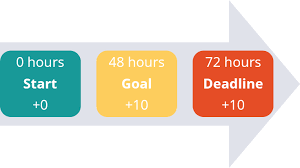Service Level Agreement (SLA)
What is SLA?
- SLA is used to establish work completion deadline (by which time work should be completed)
- SLA is brought to enforce on-time performance
The 1st milestone of SLA is the Goal. The Goal defines how long assignments should take.
The Deadline defines the longest amount of time the particular assignment can take. It is measured when the assignment is started.
There are many types of SLA’s:
- Case-Level
- Process-Level
- Assignment-Level
- Approval-Level
- Stage-Level
The types of SLA’s are based on where the Service Level Agreement has been configured. i.e. If the SLA is configured in the Process Level, SLA timings begin when the process has been called, and ends at the last step of the process.
Now, let us consider an example to understand more.

A Approval-Level SLA is called. If the case is not gone forward within 48 hours, a notification is send to the manager and the person concerned. If the case has not proceeded beyond 72 hours, the case is reassigned to another person.
Now, here the intervals between each phase is called the Service-Level Intervals i.e. How long it takes to perform the task. The actions like notification send to manager, case reassigning is called escalated actions. The escalated actions are performed so that your application has faster resolution times.
Here, in each phase, the Urgency of the particular case changes. First it is of low priority. Now, when the Case has not been moved for 48 hours, the priority is increased and action has been taken. Even after the action, if no change is detected in the case, The priority of the case increases further and it is reassigned to another person. Priority can vary between 10 and 100, 100 being the one with highest priority.
If there are cases with higher priority in the queue, The Get Next Work functionality assigned the higher urgency tasks before the lower ones.
